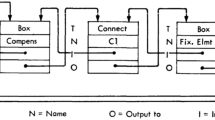Abstract
In this paper architectural forms are presented as symbolic forms issued from the complex semiosis that characterises human cognition (Ferreira (2007, 2010)). Being semiotic objects, these symbolic forms are, consequently, context- dependent_they emerge and have meaning, i.e., they are assigned a functional and/or aesthetic value, in particular physical, social and cultural frameworks. As it happens with all semiotic objects, architectural forms, whatever their nature, are not static but highly interactive. In fact, they act as agents of specific semiotic processes, engaged in a permanent dialectic relationship with the environment they are embedded in. From this dialectics important physical, social, cultural and economic changes frequently arise, redefining this way the original framework for decades to come. As Pallasmaa (2009) points out: “Architecture is existentially rooted, and it expresses fundamental existential experiences, the complex condensation of how it feels to be human being in this world. Architecture grounds and frames existence and creates specific horizons of perception, understanding and identity.” Architecture happens in the context of particular landscapes both natural and man-made, individuating spaces, assigning them an identity, turning the frequently undifferentiated physical environment into “locus”, “place”, “site”, “ort”, definitely contributing to the definition of the mental map that individual minds are able to share collectively. The fundamental role played by architectural forms in the definition of “place” and identity and in the shaping or reshaping of a physical, social and cultural environment is analysed in this paper through a case study that observes the consequences of this dynamics in the development of the social and cultural tissue of a particular city.
















Similar content being viewed by others
Notes
The Gibsonian tradition uses identical imagery to introduce the concept of “affordance”
The use of the distinction in scientific inquiry was first proposed by de Saussure (1969). According to him language phenomena and consequently linguistic inquiry could be plotted on two axes: the axis of simultaneities and the axis of successions. The axis of simultaneities standing for the relations of coexisting things . . . from which the intervention of time is excluded, while the axis of successions advances through time such that only one thing can be considered at a time. Fixed grammatical rules would occur on the axis of simultaneities, while their gradual evolution through linguistic history on the axis of successions.
According to de Saussure, the synchronic and the diachronic views are two entirely distinct and complementary perspectives, though mutually excluding. Just as celery may be cut across the grain to display its cross section or may be cut with the grain to display its striations, all linguistic phenomena can be analysed according to a synchronic or a diachronic perspective. Synchrony emphasizes the axis of simultaneities that embraces grammar's relative permanence as a collection of syntactic rules and habits shared by individuals in the same language group, while diachrony emphasizes the "evolutionary phase" of language on the axis of selections such as occurs from one century to the next.
We consider Darwin’s approach as essentially diachronic, while Uexkull’s is essentially synchronic
Theorems are statements the author assumes could be demonstrated by logical methods or empirical evidence.
When we distinguish these two levels of semiotic structuring we are distinguishing the semiotic relations that involve a stimulus-response relationship which is dyadic in nature from those that involve a more complex relationship where the capacity of symbolically encoding allows organisms to go beyond the immediacy of sensory awareness. When we distinguish these two levels of semiotic structuring we are also distinguishing biological drives that are implicit in all basic semiotic instances from the communicative urge that is inherent to human cognition.
According to Muntanõla (2004) every architectural work always comprehends three phases: prefiguration which involves the conceiving of an architectural project, the configuration that corresponds to the actualisation of that project and the refiguration resulting from the experience of its actual use.
Muntanõla (2004) views the definition of place as a genealogical crossing between project and history
References
Cassirer, E. (1996). The philosophy of symbolic forms, vol. 4. The Metaphysics of Symbolic Forms. New York: Yale University Press.
de Saussure, F. (1969). Cours de Linguistique Génerale. Charles Bally et Albert Sechehaye eds. Payot. Paris.
Ferreira, M. I. A. (2007). Ph.D. Thesis. On meaning: the phenomenon of individuation and the definition of a world view.
Ferreira, M. I. A. (2010). On meaning: A biosemiotic approach. Biosemiotics: Springer. doi:10.1007/s12304-009-9068-y.
Hoffmeyer, J. (2008). Biosemiotics. An examination into the signs of life and the life of signs. Chicago, USA: University of Scranton Press.
Lefebvre, H. [1991 (1974)].The production of Space. Translated by Donald Nicholson-Smith. Blackwell Publishing Ltd
Maturana, H. R., (1978). Biology of Language: The Epistemology of Reality, in G. Miller and E. Lenneberg eds. Psychology and Biology of Language and Thought. New York Academic Press.
Maturana, H.R., Varela F. J. (1980). Autopoiesis and Cognition. D. Reidel. Dordrecht, Holland.
Muntanõla, J., (2004). Projects, territories and cultures. Arquitectonics. Arquitecture 2000. Editions UPC
Pallasmaa, J. (2009). The Thinking Hand: Existential and Embodied Wisdom in Architecture. Wiley and Sons. UK
Uexküll, J., von (1934). A stroll through the worlds of animals and men- a picture book of invisible worlds. Instinctive behaviour, the development of a modern concept. Claire H. Schiller translator and editor. New York: International Universities Press.
Zumthor, J. (2006). Thinking architecture. Birkhauser, Verlag, 2nd edition.
Author information
Authors and Affiliations
Corresponding author
Rights and permissions
About this article
Cite this article
Ferreira, M.I.A. Interactive Bodies: The Semiosis of Architectural Forms. Biosemiotics 5, 269–289 (2012). https://doi.org/10.1007/s12304-011-9126-0
Received:
Accepted:
Published:
Issue Date:
DOI: https://doi.org/10.1007/s12304-011-9126-0




